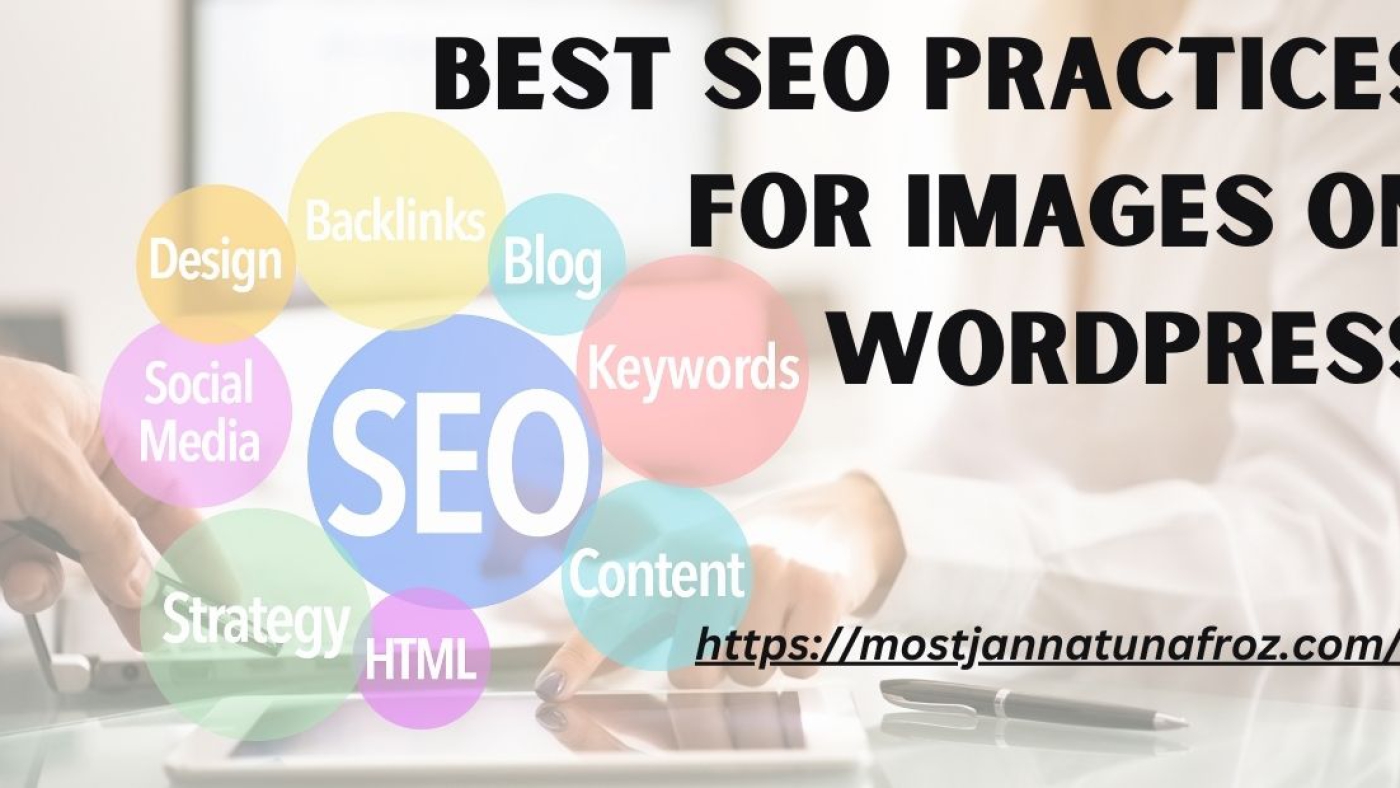Images play a crucial role in the visual appeal, user experience, and overall SEO performance of your WordPress website. However, if not optimized correctly, images can negatively affect your website’s speed and search engine rankings. This article provides in-depth information on the best SEO practices for images on WordPress, ensuring that your visuals enhance, rather than hinder, your site’s performance.
Why Image SEO Matters
Optimizing images is vital because it directly impacts three key areas:
- Page Load Speed: Large, unoptimized images can slow down your site, leading to a poor user experience and potentially higher bounce rates.
- Search Engine Visibility: Properly optimized images can appear in Google Image Search, driving additional traffic to your site.
- Accessibility: Alt text helps visually impaired users understand the content, which improves the accessibility and compliance of your site.
By following these image SEO practices, you can make your WordPress website more user-friendly, accessible, and search engine-friendly.
1. Choose the Right File Format
Selecting the correct image format is the first step in image optimization. Here are some common formats and their use cases:
- JPEG (JPG): Best for photos and images with lots of colors. It provides good quality with smaller file sizes.
- PNG: Ideal for images requiring transparency, such as logos. However, it has larger file sizes compared to JPEG.
- WebP: A newer format that offers better compression rates without sacrificing quality. It’s supported by most modern browsers and is recommended for use on WordPress.
2. Compress Images Before Uploading
Uploading large image files can slow down your WordPress site. Therefore, always compress images before uploading. Tools like TinyPNG, ImageOptim, or Squoosh can help reduce file size without losing quality. Additionally, you can use WordPress plugins like Smush, ShortPixel, or Imagify for automatic image compression.
3. Use Descriptive File Names
Search engines crawl file names, so using descriptive, keyword-rich file names can improve your SEO. Instead of a generic file name like “IMG1234.jpg,” use something more descriptive, such as “best-seo-practices-for-images.jpg.” This helps search engines understand the content of the image and improves your chances of ranking for relevant searches.
4. Optimize Alt Text
Alt text serves multiple purposes in SEO and accessibility. It helps search engines understand the context of the image and provides a description for visually impaired users. When writing alt text, be descriptive and incorporate relevant keywords, but avoid keyword stuffing. For example, instead of “image,” use “SEO practices for WordPress images.”
5. Add Titles and Captions to Images
Using titles and captions can enhance the context of your images. While the title attribute isn’t as important for SEO as alt text, it still contributes to user experience. Captions provide additional context and can encourage users to engage with the content.
6. Use the Right Image Dimensions
Uploading large images and then using CSS to scale them down wastes bandwidth and slows down your site. Always resize images to the exact dimensions required by your design. WordPress allows you to set custom image sizes in the settings, which can automatically create different sizes when you upload an image.
7. Enable Lazy Loading
Lazy loading is a technique that defers the loading of images until they are needed, i.e., when the user scrolls to the image. This significantly improves the initial loading time of the page. WordPress 5.5 and above have lazy loading enabled by default, but you can also use plugins like Lazy Load by WP Rocket to customize the lazy loading settings.
8. Leverage Image Sitemaps
Including images in your sitemap can help search engines discover them more efficiently. WordPress SEO plugins like Yoast SEO and Rank Math can automatically generate an image sitemap for you, increasing the likelihood of your images appearing in Google Image Search.
9. Use Responsive Images
Responsive images ensure that the right size image is served to different devices. WordPress automatically adds the srcset attribute to your images, enabling the browser to choose the best image size for the screen it’s being viewed on. This improves page load speed and enhances the user experience.
10. Implement Content Delivery Network (CDN) for Images
A CDN stores copies of your images on servers across the globe, reducing the distance between your website and your users. Using a CDN can drastically improve image loading times, especially for international visitors. Popular CDN services for WordPress include Cloudflare, StackPath, and KeyCDN.
11. Avoid Hotlinking
Hotlinking occurs when other websites link to the images hosted on your server, consuming your bandwidth. To prevent hotlinking, use WordPress security plugins like All In One WP Security & Firewall, or add code to your .htaccess file to block external sites from using your images.
12. Implement Structured Data for Images
Structured data markup, such as Schema.org, helps search engines understand the context of your images better. For example, adding ImageObject schema can provide details like the image URL, description, and license. You can use plugins like Schema Pro or Yoast SEO to easily add structured data to your images.
13. Regularly Update and Replace Outdated Images
Outdated images or those with low resolution can negatively impact the user experience. Regularly updating images ensures that your content remains relevant and visually appealing. When replacing images, make sure to update the alt text, file name, and any associated captions.
14. Monitor Image Performance with Google Analytics
Use Google Analytics to monitor the impact of images on your website’s performance. Check metrics such as bounce rate, page load time, and time on page to identify pages where image optimization could be improved.
15. Utilize Image Plugins for Advanced Optimization
In addition to the basics, there are advanced plugins that can help automate image optimization:
- Optimole: Offers cloud-based image optimization and a built-in CDN for better performance.
- EWWW Image Optimizer: Provides server-side image compression and various conversion options.
- WP Rocket: A caching plugin that also offers image optimization features such as lazy loading.
Conclusion
Optimizing images on your WordPress site is essential for better SEO, faster loading times, and improved user experience. By following these best practices—such as choosing the right file format, compressing images, optimizing alt text, and enabling lazy loading—you can enhance your site’s performance and search engine visibility. Make image optimization a routine part of your SEO strategy, and your WordPress site will benefit from higher search rankings and increased user engagement.
By implementing these strategies, you’ll ensure that your images not only look great but also contribute positively to your site’s SEO efforts.


Add a Comment